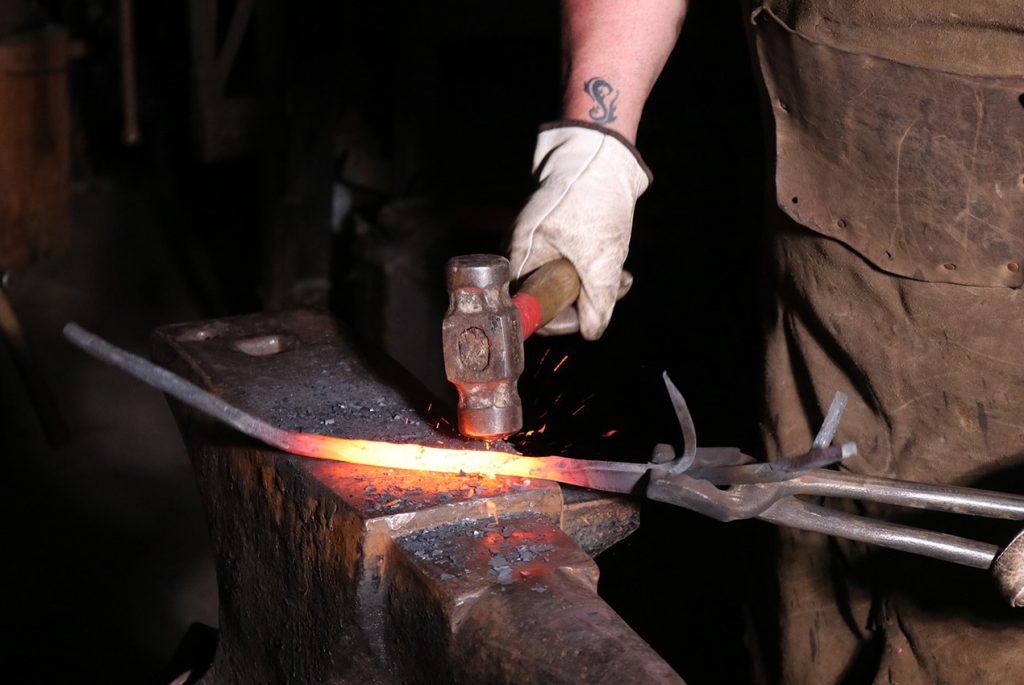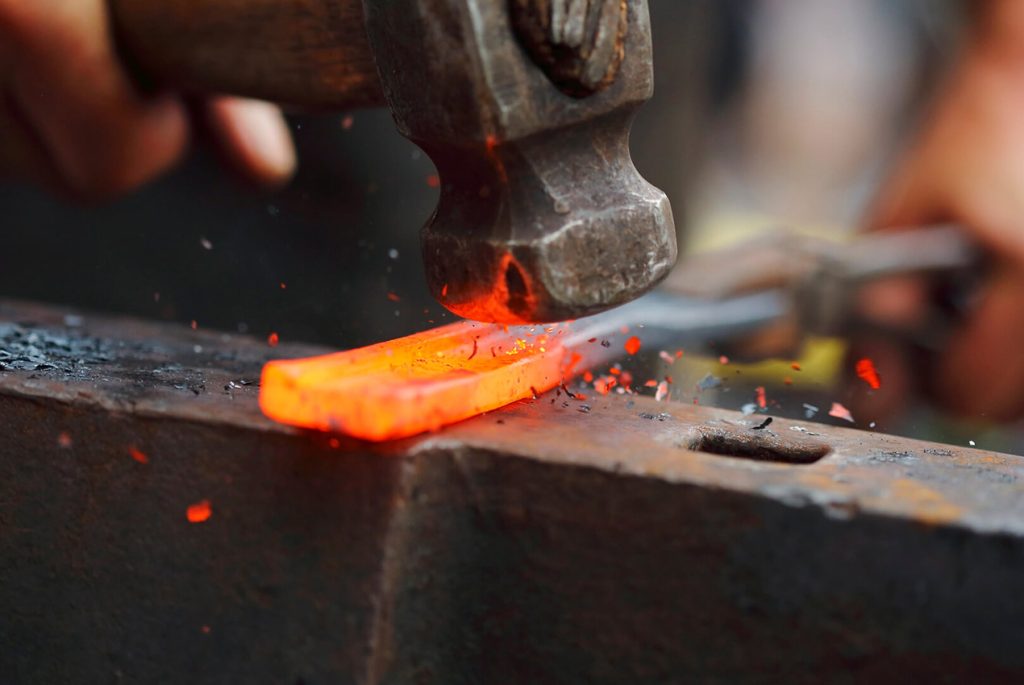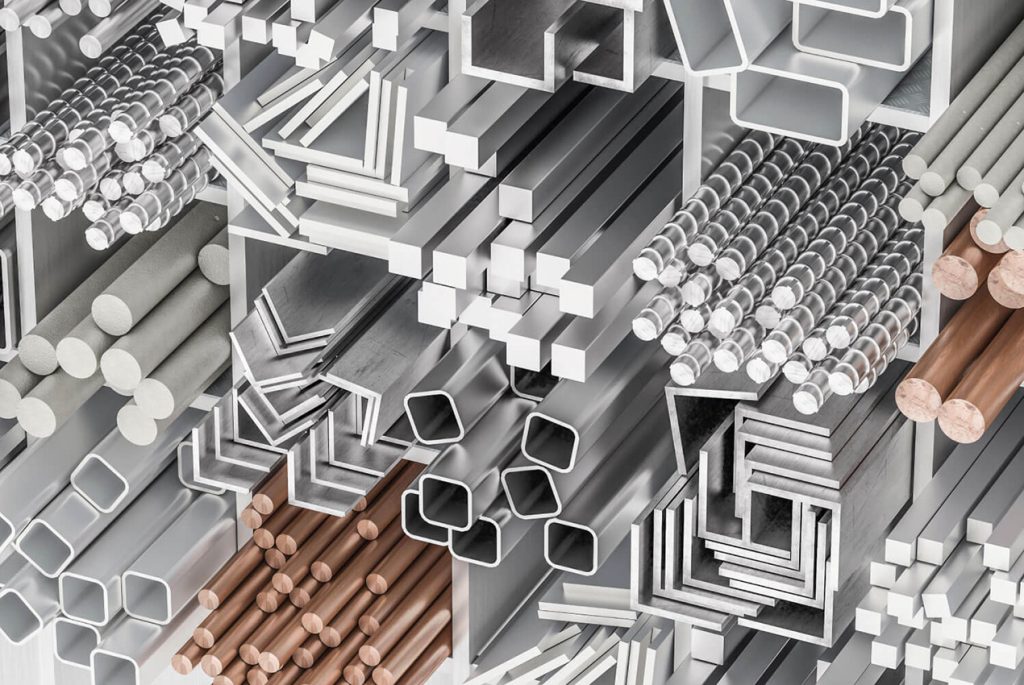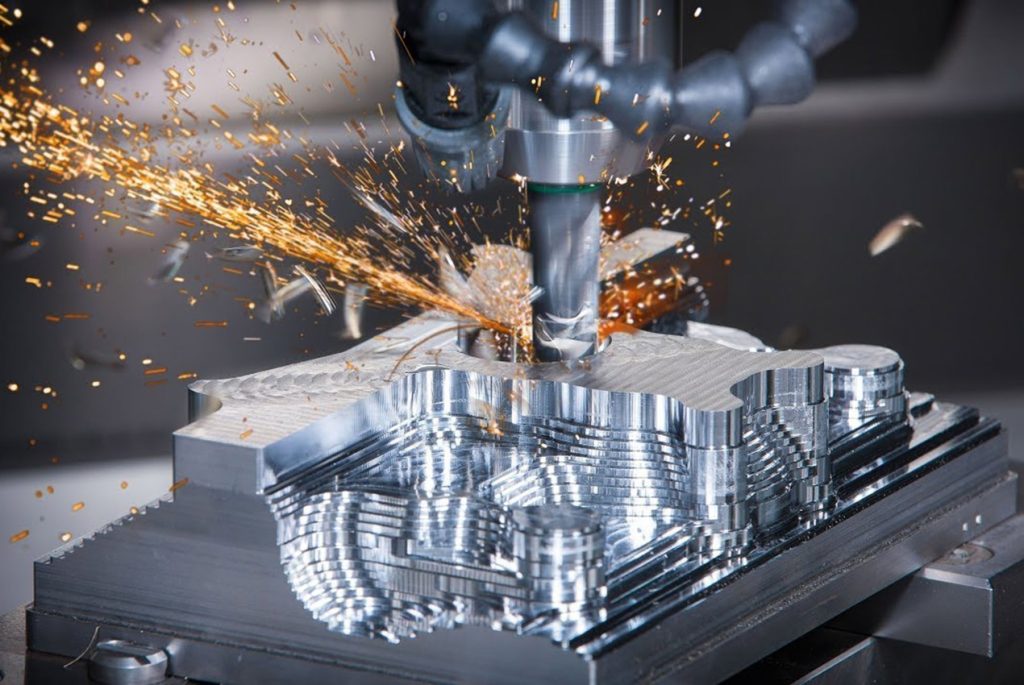Stainless steels are the range of iron alloys with at least 10.5% of chromium content, alongside other elements that ensure their “stainlessness” in the form of chemical resistance, as well as strength, cryogenic toughness, and formability.
The term was used by the smiths of the old days to name any steel of certain qualities, and it’s an umbrella term that does not reflect the diversity of stainless steels, or the properties that define certain stainless steel types.
However, the requirements an alloy needs to meet to qualify as stainless are pretty clear from the name, and most of them gain a lot from the process of forging stainless steel.

Contents
Benefits of stainless steel forging
Due to the chemical specifics, forging stainless steel is good for it. It recharges it, strengthening the desirable existing qualities of any stainless steel, and also elevating its perceptive properties.
Mainly, stainless steel forging prevents corrosion. Some other perks get achieved in the process – be it fully-fledged forging or simple “edge packing”. For example, stainless steel forging creates continuous grain flow needed for the metal to be sturdy.
Better heat resistance
High heat resistance and friction resistance are integral for many applications of forged stainless steel. That includes anything from automotive movement and chemical processing to the use of kitchen tools.
Forging stainless steel enhances the material’s durability in extreme environments and rapid temperature changes, thus protecting the metal structure.
Improving corrosion resistance
Corrosion is very degrading to metals, and even the best stainless steel grades get affected eventually. Luckily, forging stainless steel slows the corrosion down. Stainless steel forging renews the wearable protective layer of the forged object.
By basically resetting the grade, forging allows anticorrosion components to be evenly spread throughout the newly forged stainless steel parts, allowing them to withstand harsh environments longer – an extremely valuable thing for marine equipment or chemical production.
Maintaining the protective oxide layer
Alongside corrosion, surface oxide level is important for crack protection. With time, crevice corrosion happens, leading to stress cracking. This eventually makes stainless steel good for nothing, especially if a clean surface is a requirement.
Forged stainless steel has this important protective oxide layer refreshed every time the forging occurs, thus preventing a part from wearing and cracking.
Common grades of stainless steel forgings
All the grades of stainless steel have slightly different chemical compositions and properties. Stainless steel forgings are represented in two large groups, with a number of grades within each group.
300 series stainless steel
This series has very common grades, as they are versatile in applications of stainless steel forgings.
- Type 301. It’s austenitic stainless steel, defined by chromium and nickel content. It requires cold working to attain its best properties – strength and ductility.
- Type 304. The most used stainless steel in the world, this type has good corrosion resistance and durability. It’s easy to sanitize, which makes it the choice of kitchen appliance manufacturers and knife makers. It’s also used in industrial applications.
- Type 316. It’s close to the 301-type stainless steel structure, with the difference here being molybdenum. Despite a relatively low melting point, it still has high chemical resistance against chlorides and acids, with a very low risk of pitting corrosion.
400 series stainless steel
These stainless steel forgings are both ferritic and martensitic in structure and contain chromium. Variable in properties, they are affordable and simple to work with.
- Type 408. This alloy endures heat well but is not particularly corrosion-resistant, which limits the range of stainless steel products it can be used in.
- Type 409. It’s a very cheap alloy suitable for car exhaust production, with decently high corrosion resistance and heat resistance.
- Type 420. The best use of this stainless steel is for medical instruments since its smooth surface with high corrosion resistance allows impeccable sanitizing. Besides that, it’s great for kitchen knives.
- Type 440. This stainless steel is also popular for cutlery items due to its great edge retention, and its hardness allows the best cutlery steel forgings.

Stainless steel forging and types of steel
With all the differences between steel grades, the main one is how much carbon steel can have within its structure, as it directly correlates with its mechanical properties and stress-cracking. This is the factor that defines the density and hardness of all stainless steel forgings.
Ferritic stainless steel
With under 0.10% of carbon content, it’s ferritic steels that have the least percentage of carbon. The steel of this structure belongs to magnetic non-hardenable alloys, meaning it can’t be hardened using heat treatment. The only way to slightly harden it is cold rolling.
Austenitic stainless steel
Austenitic is a kind of stainless steel with a particular crystalline structure. It can absorb about 2% carbon if it’s heated to about 1674 °F. Those steels must contain manganese or nickel to achieve the alloy’s stable structure with the best hardness and corrosion resistance.
Martensitic stainless steel
Martensitic stainless steel also has crystal structures in its essence. Their hardening and tempering must be done by aging and heat treatment. The heightened hardness of this structure, however, does not pair with high chemical resistance the same way the austenitic structure does.
They can be of both low and hard carbon content from 0.10% up to 1.2% depending on the steel grade. The higher the carbon level is, the more magnetic and less resistant to corrosion/oxidation stainless steels are. The forging process helps to achieve good ductility, strength, and hardness, the last, especially, due to heat treatment.

Kinds of stainless steel work
Stainless steel forging is not the only option for producing steel items. Depending on your goals, steel structure, and working capacities, you must find the most optimal way of manufacturing your stainless steel goods.
Forging: close die vs. open die
Stainless steel forging with the closed die method leaves next to no waste while ensuring very detailed work. The amount of the heated raw material needed for the final forged piece is placed on the bottom die and takes up almost all space within the die plates.
The open die method, however, allows the material to flow freely, while the shape of the forged stainless steel object is created by a hammer or power hammer. Stainless steel forgings by these two techniques can be similar, but the close die is good for the mass-forging process, while the open die is used for making small amounts.
Casting method
For manufacturing individual items, casting can be used instead of stainless steel forging. The process looks like pouring melted metal into a molding container of a specific form. This way, every stainless steel part can be a unique thing meant for individual design, whether it’s the final shape of it or not.
CNC machining
Machining, and using CNC machines, to be exact, is also a popular method used besides stainless steel forging that is applied on an industrial level.
Stock removal processes are fast and precise. The workflow allows a good pace and high quality of the items. The shapes are created by cutting through a steel piece, and very detailed mass-produced stainless steel objects are made this way.

You may be interested in an article about the importance of the correct temperature of forging steel.
FAQs
Can you forge stainless steel?
While stainless steel is one of the hardest steels to forge, it benefits from the process in many ways. Forging enhances such qualities of stainless steel as strength and corrosion resistance. It helps to create a continuous grain flow needed for control over the hardness of certain parts of a forged item.
Is it hard to forge stainless steel?
Stainless steel is suitable for forging but needs extra carefulness with working around a few difficulties. Mainly, temperature limits must be maintained to avoid damage on a microstructural level. Then, proper passivation technique is the key to stainless steel properties like good durability.
Also, beware of what type of steel you work with – to apply the right amount of hammering.
What is the forging temperature of stainless steel?
Depending on the grade, the temperature of stainless steel forging varies from 1700 to 2300 °F. While stainless steel requires relatively higher forging loads and energy than other steels, overheating it beyond limits causes micro damage to the structure and must be avoided.
Can stainless steel be forged into a knife?
Yes. Carbon, tool, orstainless steel are all used in knife-making. Stainless steel grades used here must be up to standards regarding corrosion resistance, hardenability, and strength. This is achieved by adding chromium, cobalt, molybdenum, and other ingredients. Stainless steel works for knives of any type and function.
In addition to this article, read about stainless steel: What Is Stainless Steel?
Conclusion
With all the aspects of stainless steel quality that the forging process improves, all it takes to gain from it is to match the steel type with the style of metalwork correctly. Many factors must be considered for the most efficient choice of stainless steel forging style, which makes achieving the best results of stainless steel forging challenging yet rewarding quality-wise.


